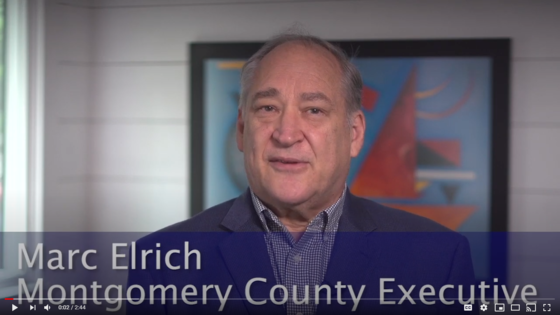 Dear Friends:
I want to share two pieces of information with you. The first is about the 2020 U.S. Census.
It was recently announced that the very important counting of the people in the U.S. via the Census has been cut short by an entire month. There are still many people who have not yet been counted—including many in Montgomery County--and we need them counted. Getting everyone counted is important for funding and many other reasons.
If you have not filled out your Census form yet, please do so. Here is information on the Census: montgomerycountymd.gov/census/.
We can use your help this weekend to reach out to others. We will have people at food distribution sites and other community events. They will be urging people to take a few minutes to fill out a Census form. If you are available to help, here is a way to get more information about these events: montgomerycountymd.galaxydigital.com/need/detail/?need_id=530357.
The second issue I wanted to address is about how our metrics are looking in fighting the COVID-19 virus. We are doing better than most of the surrounding jurisdictions, and better than the State in general. We are also doing better than most of the country.
We are doing better because of the steps we have taken—all done with public health in the forefront of our decisions. We still need to reduce community transmission of the virus. When the State first shut down businesses and other organizations in March, we were averaging about four positive tests per day. Right now we are averaging about 70 cases each day, which is lower than the peak we experienced for daily positive tests--but still too high to take further steps in reopening.
That is why we are continuing to be cautious. Earlier this week, the County Council unanimously approved my Amended Executive Order that will allow a few more types of businesses to open—with appropriate precautions.
The amended order also requires restaurants to end on-site liquor sales at 10 p.m. each night (takeout is still allowed). This was instituted based on contact tracing data released by the State that indicates people congregating in establishments later in the evening have higher instances of physical contact and reduced physical distancing.
For more information about the executive order, view the press release.
Please know that protecting the public health is the priority in each of these decisions. I cannot emphasize enough that we are doing better than many jurisdictions because of the careful steps we have taken—and because so many residents and businesses have understood the need to follow those steps.
We will continue to proceed with caution and with careful consideration of the data, the science and the public health.
 Marc Elrich, County Executive
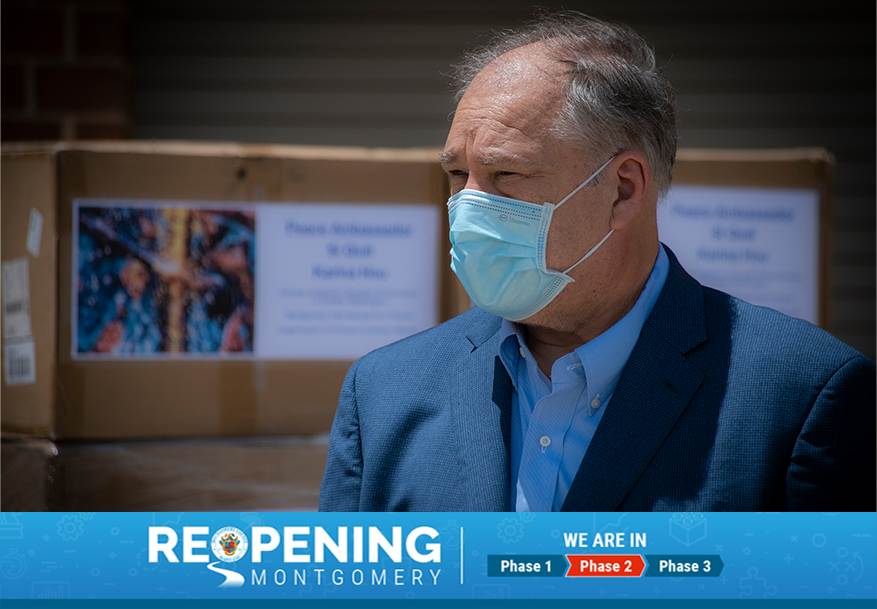 Montgomery County Executive Marc Elrich’s plan to update his executive order regarding restrictions during the COVID-19 health crisis and allow more types of businesses to reopen was unanimously approved on Aug. 4 by the Montgomery County Council. Amended Executive Order 87-20 includes additional measures to protect the public from the spread of the virus. One measure forbids food service establishments from serving alcoholic beverages for on-site consumption after 10 p.m.
The change for the sale of alcohol comes following contact tracing data released by the State that indicates people congregating in establishments later in the evening have higher instances of physical contact and limited social distancing. One quarter of those interviewed by the State about contacts indicated indoor and outdoor dining as an activity in which they participated. Since the beginning of July, County officials have closed four restaurants and cited four for not following reopening restrictions.
The full text of updated Executive Order 87-20, which went into effect at noon on Wednesday, Aug. 5, can be found at website.
The highlights of the updated executive order include:
- Face coverings section was changed so the text is consistent with the most recent executive order issued by Maryland Governor Larry Hogan to require face coverings in outdoor public areas. Montgomery County’s local health officer had previously issued a directive with similar provisions.
- Businesses allowed to reopen will include those providing services for tanning, tattooing, waxing, threading, electrolysis, cryotherapy, facials and massages. They will be allowed to operate by appointment only.
- Ice skating rinks will remain closed to the public. However, they may operate as a “fitness center” for the purpose of individual or group training.
- Clarified guidelines for cigar bars, hookah bars and vape shops to state they “may open solely to sell retail goods. Smoking on site is strictly prohibited.”
- Food service establishments may not serve alcohol after 10 p.m.
- Clarified guidelines under which “fitness centers” can operate. Fitness centers include dance studios, health clubs, health spas, gyms, training facilities and other indoor physical activities.
- Clarified that food courts in malls may only serve food for carryout.
- Malls must remove tables, chairs and benches to discourage congregating.
- Religious facilities can hold outdoor services with an increased limit to 150 participants.
- Clarified guidelines regarding sports activities, categorized by level of risk as detailed in the “Maryland Sports Commission Return to Play Report,” with the following exceptions:
- Soccer and flag football are considered to be high-risk sports (The play of high-risk sports is prohibited. However, non-contact skills-building drills are permitted. High-risk sport scrimmages, games, matches and competitions are prohibited.).
- Solo kayaking/canoeing are considered to be low risk (allowed in Montgomery).
- Tandem kayaking/canoeing are designated as low risk provided participants are from the same household (allowed in Montgomery).
Officials will continue to review these designations and may alter recommendations for sports if they are deemed to be a safer category.
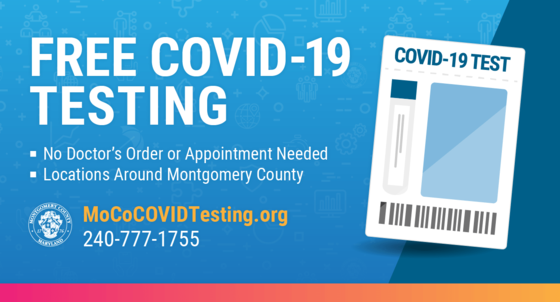 There are 40 sites in Montgomery County where residents can get tested for COVID-19, including three permanent County-operated sites. In addition, over the next week the County will make testing available at four popup sites—three in Silver Spring and one in Germantown.
The popup test sites scheduled:
- Friday, Aug. 7. 8 a.m.-noon. PlumGar Recreation Center. 19561 Scenery Dr., Germantown.
- Saturday, Aug. 8. 9 a.m.-noon. Clifton Park Baptist Church. 8818 Piney Branch Rd., Silver Spring.
- Tuesday, Aug. 11. 4-8 p.m. Mid-County Recreation Center. 2004 Queensguard Rd., Silver Spring.
- Thursday, Aug. 13. 10 a.m.-6 p.m. Silver Spring Civic Building. 1 Veterans Plaza, Silver Spring.
Appointments are recommended for the County-operated sites to reduce wait times, but walkups are available. At the County-operated sites, a doctor’s order is not required and no symptoms need to be evident to get a test. Those tests are free.
There may be fees at some of the 37 sites not operated by the County and some require special arrangements in advance.
The County-operated permanent test sites are in Germantown, Wheaton and White Oak. Times and locations sometimes change on days with excessive heat so residents should check the testing website for potential changes on those days. Popup testing clinics are located in different parts of the County.
Appointments can be made online at www.MoCoCOVIDTesting.org or by calling the Testing Helpline at 240-777-1755. The line is open seven days a week from 8 a.m. to 6 p.m. Those considering tests should reconfirm the details.
The County-operated sites use saliva tests that are easier and faster.
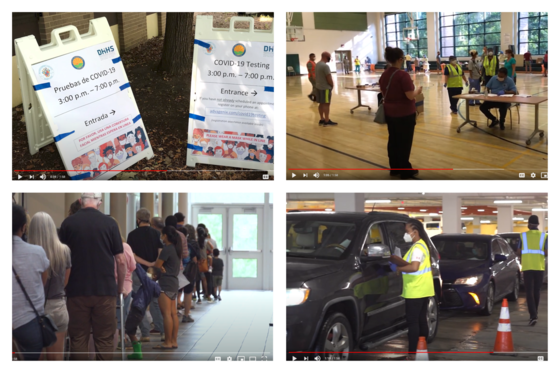 Montgomery County health officials are encouraging residents to get tested for COVID-19. Even for those without symptoms, there is a chance that they have been exposed to the virus. That is why getting tested is important.
There are three permanent test sites in the County and popup test sites are rotated each week to various locations around the County. To make an appointment, go to www.mococovidtesting.org.
Getting testing is easy and convenient. A video shows how it works.
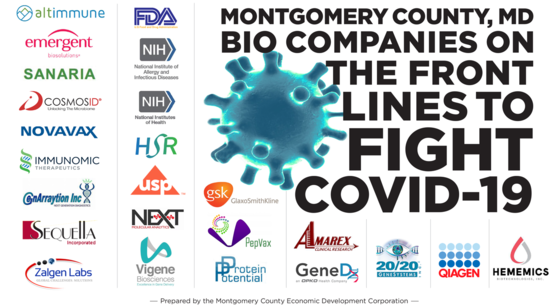 Montgomery County, through its private biotech companies and the Federal agencies that call the County home, is on the forefront of the fight to control the COVID-19 virus that created a pandemic continuing to grip much of the world.
Approximately 23 private companies are working aggressively to help combat COVID-19. In addition, the Bethesda-based National Institutes of Health; its National Institute of Allergy and Infectious Disease, directed by Dr. Anthony Fauci; and the U.S. Food and Drug Administration, which is located in White Oak, are all working on ways to beat the virus.
The private companies and the Federal agencies are working to develop effective treatments, find a vaccine and offer testing support against COVID-19. The County’s biohealth hub is brimming with companies that are innovating, forming promising partnerships and providing their expertise to other company developers.
The Montgomery County Economic Development Corporation has more information about the local effort to solve the worldwide health crisis.
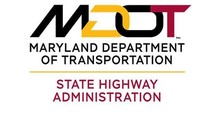
More Montgomery County residents are returning to job sites and generally increasing their activities as conditions change with the COVID-19 health crisis. Some drivers will encounter traffic delays on River Road (MD 190) as the Maryland Department of Transportation State Highway Administration (MDOT SHA) works on a $1.9 million roadway safety improvement project between Braeburn Parkway and Pyle Road in Bethesda.
The project, which is underway, is scheduled for completion in Spring 2021. To perform all phases of work, crews will use temporary single-lane closures weekdays from 9 a.m.-3 p.m., and multiple-lane closures overnight from 9 p.m.-5 a.m. the following morning. Additional work times and lane closures may be necessary.
The project aims to improve traffic operations and safety for pedestrians and motorists. The project is a continuation of collaboration between MDOT SHA and the Montgomery County Department of Transportation, which has urged the State to consider safety projects in that area of River Road where a crash resulted in multiple fatalities in 2016. The changes support the County’s Vision Zero program, which is seeking to eliminate traffic-related deaths and serious crashes.
The improvements will include:
- Construction of a new traffic signal on River Road at Braeburn Parkway.
- Installation of concrete channelized islands to prohibit through- and left-turn movements from Braeburn Parkway onto River Road.
- Installation of pedestrian-activated, full-color traffic signals on eastbound and westbound River Road in the vicinity of Pyle Road.
- Relocation of the pedestrian crossing on westbound River Road closer to Walt Whitman High School.
- Construction of a new Americans with Disabilities Act (ADA) compliant sidewalk connection to the existing sidewalk adjacent to the school’s athletic fields.
The new signal on River Road at Braeburn Parkway will include exclusive left-turn arrows from eastbound and westbound River Road onto Braeburn Parkway. The new signals on River Road at Pyle Road will remain green unless a pedestrian presses the button to cross. It will also include accessible pedestrian countdown equipment.
|

Montgomery County Executive Marc Elrich is encouraging residents to apply for the Montgomery Homeownership Program of down payment assistance. The program, which is available to help working families and first-time home buyers, is now accepting applications. Reservations will be accepted until the funds are fully committed.
Applicants who qualify can access down payment assistance loans up to $25,000 or up to 40 percent of the household income of the prospective homeowner – whichever is less. Funds can be used for a down payment or for closing costs. Approved buyers also will receive a competitive loan rate from the Maryland Mortgage Program.
The zero-interest down payment assistance loans can be used for modestly priced homes in Montgomery County. The loans are to be repaid upon the sale, payoff or transfer of the home.
“I am pleased that we are able to partner with the state to give people a chance to buy their first home,” said County Executive Elrich. “Homeownership is a significant source of wealth for most people and we need to extend that opportunity to more of our residents. Homeownership can help with building community for families, neighborhoods and schools. I have long advocated for this type of assistance, and I am glad that we are able to continue this program.”
The Montgomery Homeownership Program is administered by the Maryland Department of Housing and Community Development, which provides similar down payment assistance across the State.
The program is part of Montgomery County’s ongoing efforts to provide more paths to homeownership. Montgomery County has committed $1 million in Fiscal Year 2021 to the program with the State.
|
 The Montgomery County Government’s efforts to keep residents informed by using the social media format Nextdoor has earned the County the 2020 “Nextdoor Neighborly Award” for “exceptional use” of the platform. The County was recognized at the recent Golden Post Awards annual program, which this year was held virtually due to the COVID-19 health crisis.
The Golden Posts Awards are designed to honor local and state governments for their outstanding use of social media.
Montgomery County’s Public Information Office and County departments utilize Nextdoor to keep residents informed of news and happenings around the County. The Neighborly Award recognized Montgomery County for posts that are “engaging, quality posts driving real value.”
“People who manage social media in government are in one of the most difficult fields for social media professionals,” said the awards program website. “The Golden Post Awards is a free program dedicated to recognizing their hard work, which frequently involves high stakes, high expectations and limited resources in facilitating open communication with the public.”
In addition to Nextdoor, information on County government can be found on Facebook @MontgomeryCountyInfo and Twitter @MontgomeryCountyMD.
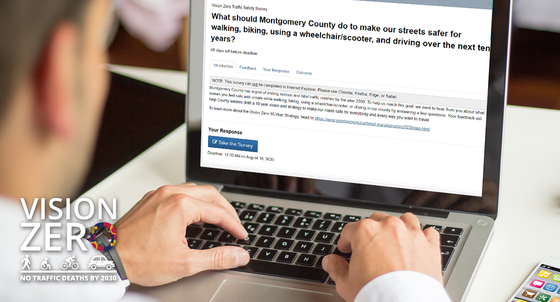 Montgomery County’s Vision Zero program, which seeks to eliminate serious and fatal traffic-related crashes, is gathering the ideas of residents to improve safety for walking, biking, rolling and driving. The Vision Zero program has a survey available in which opinions can be offered on a variety of safety issues.
The survey will close on Sunday, Aug. 9. It was launched on June 18 as part of developing a strategic plan that will guide the County toward reaching its Vision Zero goals by 2030.
“Our County is large and diverse, so achieving Vision Zero will look very different in places like Downtown Silver Spring than it will in Germantown or than it will in Damascus,” said County Executive Marc Elrich. “That is why we need to hear from our residents on their needs and ideas for improving transportation safety in their neighborhoods. This online survey will be one of many opportunities for residents to share their views.”
The survey will take an average of five to seven minutes to complete. The results will help shape future Vision Zero activities. The survey can be found at montgomerycountymd.gov/visionzero/2030plan.html.
For more information about the County’s Vision Zero program, go to the program’s website at https://www.montgomerycountymd.gov/visionzero.
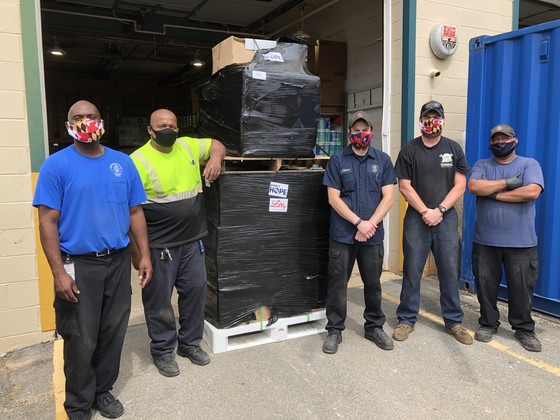 Obtaining personal protective equipment (PPE) was a challenge as the COVID-19 health crisis began. County nursing homes, hospitals and frontline workers needed protection, but could not get the supplies they needed. Fortunately for Montgomery County, a team quickly was formed and went to work.
The County’s Department of General Services (DGS) Director David Dise tasked Jamie Cooke with leading the charge. Jamie, the DGS chief operating officer, quickly teamed up with Procurement Director Ash Shetty. Within days of Statewide closures, staff from DGS, Procurement, the Department of Health and Human Services, the Office of Emergency Management and Homeland Security (OEMHS), Police and Fire and Rescue formed a team in the quest for supplies and a method for their distribution.
“We started with a blank slate, with no warehouse, no trucks, no people,” said Cooke. “Within three days, we were up and running.”
They scoured the lists of their regular suppliers and spent countless hours culling through proposals from companies offering N95 and surgical masks, gloves, gowns and hand sanitizer. Some of those were well-intentioned, but unlikely to deliver. Others were outright scams.
“We probably vetted 100 businesses to find the vendors to get this stuff, said Cooke. “Ash’s team in Procurement was essential to that effort.”
When hand sanitizer became too difficult to secure, they reached out to local distilleries and a compounding pharmacy. A public-private partnership formed to manufacture hand sanitizer locally, while national and international sources dried up.
“We put together a network of nonprofits, community groups and local businesses to make fabric masks,” Cooke said.
Local upholstery shops, athletic gear manufacturers and a company that creates boat covers pivoted their production to help.
“At one point, we were producing about 20,000 cloth masks a week,” said Cooke. “Now we are down to about 12,000, but can increase the volume again if needed.”
Even the Kids Museum got involved, with local youth creating the headbands via a 3D printing method needed for face shields.
The DGS division of Fleet Management outfitted trucks and vans to accommodate delivery of supplies to high-risk facilities like nursing homes and hospitals. More than 1,600 deliveries have been made so far. Staff and volunteers helped distribute cleaning supplies and fabric masks to daycare providers. Ride On bus drivers handed out thousands of face coverings to riders attempted to board buses without them.
A new warehouse was outfitted with racking and an inventory system was created to ensure the County has enough supplies to address potential future waves of COVID-19.
So far, the team has sourced and delivered 947,747 surgical masks; 886,021 N95 masks; 479,160 KN95 masks; 248,078 face shields; 23,269 boxes of gloves; 124,787 fabric masks; 9,983 gallons of bleach; 6,087 gallons of hand sanitizer and much more to help keep residents and frontline workers safe. Most of the supplies went to non-county government entities. The County is now working to help them connect directly with sources.
|